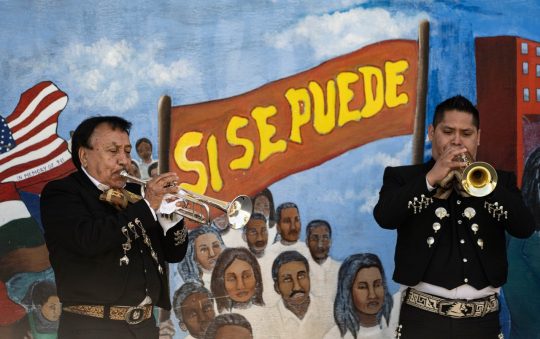A report released today by USC found that people of color across all Los Angeles County neighborhoods were stopped by police at higher rates than other groups, and that Black people were stopped and arrested three times as often as whites and Latinos.
The report found that police-initiated contacts decreased drastically at the beginning of the last decade and then rose slightly after 2016, and that certain neighborhoods, including South Los Angeles, saw pronounced increases after 2015, although stop rates decreased on average.
Meanwhile, the report also showed evidence of those same communities’ increasing reliance on police, including a steady increase in 911 calls by community members to law enforcement agencies over a seven-year period.
Calls for service were defined as the number of 911 emergency calls made by community residents per 1,000 people in the neighborhood, while police stops were defined as the number of police stops of a vehicle or pedestrian per 1,000 people in the neighborhood.
“The fact that LAPD (Los Angeles Police Department) and other participating agencies were willing to pull back the curtain, to be transparent and share their data, and participate in and understand the findings — which, in some instances, are not very positive — is a huge step,” said the report’s co-author, Erroll Southers, director of the USC Safe Communities Institute and
a professor of the practice of national and homeland security at the USC Price School of Public Policy.
“Building trust and nurturing legitimacy on both sides of the police- citizen divide are the foundational principles we were hoping to facilitate with this research and community engagement effort,” Southers said.
The researchers used data from the LAPD to analyze the frequency of community-police interactions while considering who initiated contact and how often that contact took place.
“One of policing’s greatest challenges is helping the public understand crime and disorder in the context of their lives. After all, better policing is as much about reducing the incidence of crime as it is reducing the fear of crime,” said Lt. Christopher Chase of the LAPD’s COMPSTAT computer statistics division.
Chase noted that the Neighborhood Data for Social Change initiative — launched by the USC Price Center for Social Innovation, the USC Safe Communities Institute and Microsoft — helps the public to access the public safety data, and said the LAPD is “committed to helping the public interpret it so it can draw proper conclusions and form good policy.”
The report marks the culmination of the first year of the initiative, which included listening sessions with community members, law enforcement, nonprofit and government organizations to determine what public safety meant to various groups and where there was common ground, according to the report’s co-author, Gary Painter, director of the USC Price Center for Social Innovation and the Homelessness Policy Research Institute.
Participants in the listening sessions expressed the harmful psychological impact of racial profiling by law enforcement and the lack of investments in community programs, education and health services, particularly in South Los Angeles, according to researchers.
“Going beyond looking at traditional crime data, our process involved listening sessions with community members, law enforcement and nonprofit and government organizations to figure out what public safety means to these various groups and where there was common ground,” Painter said.
The events of the last decade have elevated the urgent need for police reform and greater public trust, brought to the forefront by high-profile police killings, protests in cities around the world and movements including Black Lives Matter, according to the report’s authors.
“Arguably, never in the history of the United States has there been a more opportune time for law enforcement and communities that consist predominately of racial and ethnic minority residents to resolve to improve these essential relationships,” Southers said. “I believe that what we’ve learned will help rebuild those bridges between these agencies and the communities they serve, with safe communication and interaction that necessitate transparency and accountability.”








